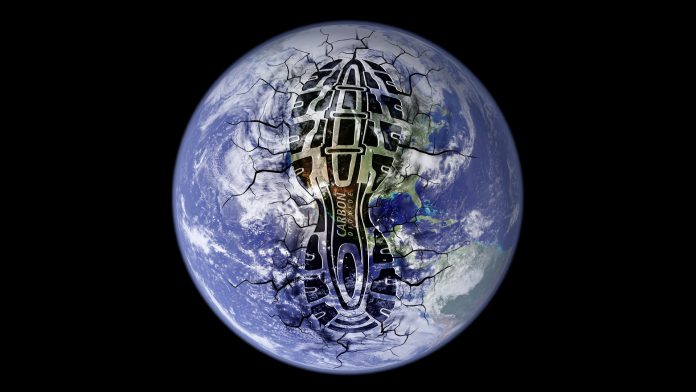A team of scientists from Fraunhofer IGB have performed the first ever fixation of carbon dioxide (CO2) resulting in the element being repurposed for the chemical industry.
What process makes this conversion possible?
As a part of the Max Planck collaborative project titled ‘eBioCO2n’, the scientists successfully conducted the first ever fixation of CO2 via a multi-enzyme reaction driven by electricity. This yielded a prospective intermediate for the chemical industry.
How is CO2 negatively impacting the environment?
CO2 is produced from the burning of fossil fuels. This green house gas is harmful to the environment and substantially contributes towards global warming. Despite the impact that this has on the environment, fossil fuels remain a key source not just of energy, but also as a raw material for the chemical industry used in many daily essentials such as, medicines and packaging.
Therefore, scientists have been intensively researching alternatives to fossil fuels, in order to negate the use of fossil fuels. Renewable resources have been considered, but if green synthetics are to keep up with the coming years, other alternative resource bases will be additionally required. The ability to fix CO2 in a targeted way, under mild reaction conditions, is another sustainable driver of a circular carbon economy.
How was the bioelectrocatalysis of CO2 done?
A collaborative team from the Straubing Institute branch at the Fraunhofer Institute for Interfacial Engineering and Biotechnology IGB, the Max Planck Institute for Terrestrial Microbiology in Marburg, and the Technical University of Munich, successfully conducted the first ever bioelectrocatalysis of CO2 into valuable materials for the chemical industry.
By combining different approaches from bioelectrochemistry, enzyme biology and synthetic biology, special bioelectrodes have been established, which means that renewable energy can be utilised to drive enzymes, and to produce valuable organic molecules from the greenhouse gas in a sequential reaction similar to photosynthesis.
In order for this to work, CO2 must be captured directly from the air. “This would allow the process not only to help industry to move away from fossil resources, but also to actively drive the climate transition by reducing CO2,” explained Dr Michael Richter, Head of Innovation Field Bioinspired Chemistry at Fraunhofer IGB. “First of all, though, we needed to show that our idea of driving such a complex biocatalytic multi-enzyme reaction with electricity like this would work at all.”
Hydrogel’s role in transporting electrons
The metabolic processes of microorganisms inspired the researchers to develop an electricity-based process for fixing CO2. The main elements in this process are the CO2-fixing enzymes that were developed by Dr David Adam and Professor Tobias Erb, Director of the MPI in Marburg.
After identifying the enzymes, the scientists’ next challenge was to provide the CO2-fixing enzymes with the continuous supply of the electrons needed for the reduction of CO2. This was achieved by embedding the enzymes in a redox-active hydrogel, allowing them to be electrochemically driven and bind carbon dioxide to a substrate, thus converting it into a valuable intermediate.
“The process is a highly efficient reaction path, reductive carboxylation, that is highly economical and clean because it doesn’t require the presence of any other substances in the system – just carbon dioxide, substrate and electrons, preferably from renewable sources,” explained Dr Leonardo Castañeda-Losada, a scientist on the project at Fraunhofer IGB with Dr Melanie Iwanow and Dr Steffen Roth.
The hydrogels utilised were specially developed at TU Munich by Professor Nicolas Plumeré and were modified to be good conductors of electrons while also offering optimal working conditions for the biomolecules. “This allows us not only to apply monolayers to enzymes, but also to expand this three-dimensionally many times over, because the electrons are conducted everywhere in the gel. Because of this, the process is likely to be readily scalable for the chemical industry in the future,” explained Professor Volker Sieber, pursuer of CO2 storage strategies at the Straubing Institute branch of Fraunhofer IGB.
This new scientific approach depends not only on the ability to drive a successful enzymatic reaction sequence using electricity, but also a highly innovative module; for the reactions to take place as intended and to produce the highest possible product yield, a continuous ‘doping’ feed for the enzyme is needed in the form of suitable functional cofactors.
These small organic molecules are utilised during each reaction and need to be regenerated to be utilised again. Not reviving them is expensive and uneconomical for the industry, which is why the eBioCO2n experts have found a way to regenerate them. In theory, this can be completed an unlimited number of times, within the same reaction systems in the hydrogels, by using electricity.
“A cofactor should really only need to be fed into the system once in order to be regenerated automatically again and again. In practice, though, it doesn’t work quite as well as that because the cofactor does not remain stable indefinitely – but it does last a very long time,” commented Richter.
The researchers utilised the bioelectrocatalysis cofactor recycling process to reveal a new set of several enzymes from different organisms. The spectrum of these biomolecules could be extended on a modular basis for further production, depending on the purpose, and utilised as a platform system.
Richter explained: “Practically any enzyme could be selected from bioinformatic databases, manufactured by biotechnological means and incorporated into the hydrogels. This could conceivably allow different biobased fine chemicals to be produced.
“These fine chemicals could then be expanded through further enzyme cascades so they could practically be diversified as much as necessary.” This is where the expertise of the Marburg MPI is applied, as if this can be scaled accordingly, the platform technology could become a promising business model for the chemical industry.
How will this be applied in the future?
With bioinspired laboratory CO2 fixation, Fraunhofer IGB could carboxylate a ‘coenzyme A’ derivative, which is a biomolecule that is important in many metabolic processes. “This has so far been the most challenging molecule to fix CO2 to by biocatalytic means,” concluded Richter. “Using this technology to modify such a large and structurally sophisticated substance is no small matter.”
The scientists are now attempting to prove that their proposition works in a reliable and scalable way and can be successfully expanded on a modular basis. Fraunhofer IGB researchers are optimistic and are even considering a well-functioning interdisciplinary team to aid in their investigation. Industry partners will be brought in for follow-up projects as soon as possible.





